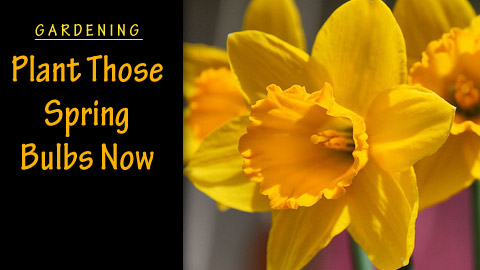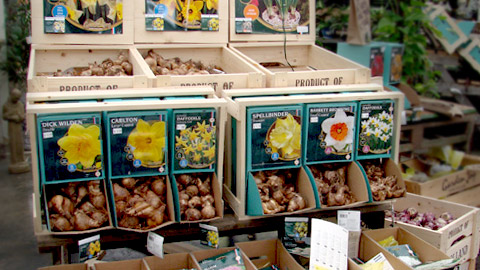Gardening: Plant Those Spring Flowering Bulbs Right Now
Editor’s Note: It’s time to plant bulbs for spring bloom in Cary, and we saw this great post by our friends at Garden Supply Company. Thanks to GSC for letting us share it with our readers.
Cary, NC – If you’re looking forward to beautiful blooms this winter and spring, here’s what you need to know right now about Spring Flowering Bulbs.
Planning
While bulbs are commonly planted in formal beds, borders, or containers, many work well in naturalized plantings. Plan to create some naturalized areas in your landscape in the following ways:
- Randomly scatter crocuses, daffodils, grape hyacinths, snowdrops, and snowflakes, and plant them where they fall. They look better when planted in clumps or drifts, so you may need to move them around a bit.
- Plant spring-flowering bulbs along the edges of woodland areas or beneath the canopies of deciduous trees. Keep in mind that they should receive plenty of sunlight and finish blooming before the trees leaf out.
- Insert bulbs such as crocuses in your warm-season lawn. The crocuses will brighten up the lawn and be finished blooming before it’s time to mow next spring.
Planting
Follow suggested planting depths when placing your bulbs. The general rule is this: plant bulbs at a depth equal to three times the height of the bulb. Be sure to use a time-release bulb fertilizer at planting time.
*helpful hint* – some bulbs naturally resist attack by squirrels, chipmunks, and voles, but many make tasty winter-time snacks for hungry animals. We suggest dipping your bulbs in I Must Garden’s Squirrel Repellant before planting. For already established plantings, spray or dust formulas are available for surface treatment.
Care for Your bulbs
Fertilize new and established beds with a slow-release nitrogen fertilizer. Don’t wait until spring, because the bulbs are producing roots and foraging for nutrients now. Keep in mind that naturalized bulbs need to be fertilized on an annual basis to encourage perennialization.
Summer bulbs which could be killed by winter freezes should be lifted, dried, and stored. Cannas, dahlias, gladioli, caladium, and tuberous begonias should be removed after their foliage is killed by frost. Because they won’t survive the winter outdoors, they need to be cleansed of soil and stored indoors in a cool but frost-free location.
Mulch plantings with compost, pine straw, or hardwood mulch to protect tender and semi-hardy bulbs from the winter cold.
And finally, clean up and remove old, dried iris leaves, stems, and other debris to help eliminate overwintering eggs from nasty pests or iris borers.
————————————————————-
For more information to get yourself some spring flowering bulbs, visit Garden Supply Company on Old Apex Road in Cary.




